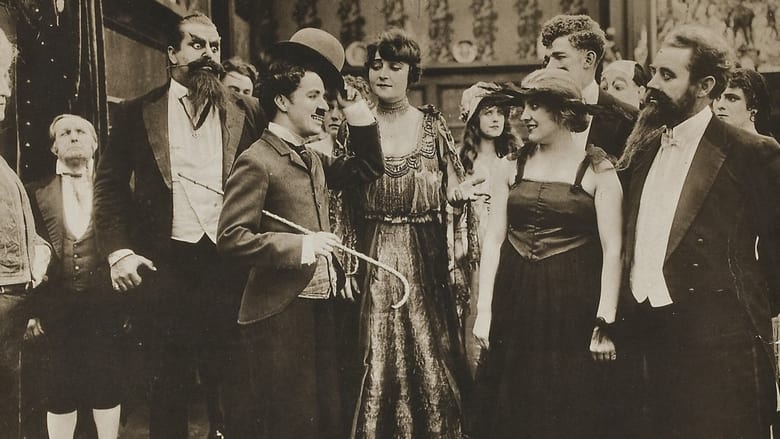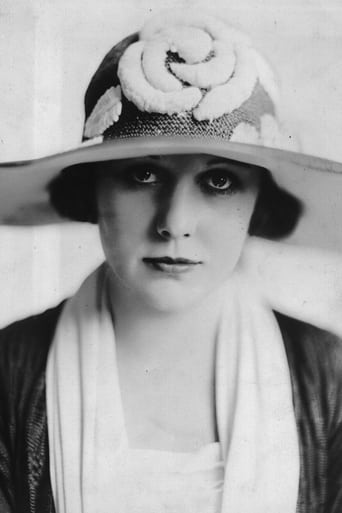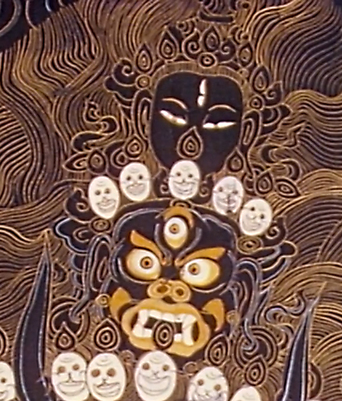

The Count (1916)
A tailor's apprentice burns Count Broko's clothes while ironing them and the tailor fires him. Later, the tailor discovers a note explaining that the count cannot attend a dance party, so he dresses as such to take his place; but the apprentice has also gone to the mansion where the party is celebrated and bumps into the tailor in disguise…
Watch Trailer
Cast


Similar titles
Reviews
Absolutely the worst movie.
It's entirely possible that sending the audience out feeling lousy was intentional
A movie that not only functions as a solid scarefest but a razor-sharp satire.
Great example of an old-fashioned, pure-at-heart escapist event movie that doesn't pretend to be anything that it's not and has boat loads of fun being its own ludicrous self.
Charlie Chaplin's fifth film for Mutual is a somewhat simpler film than its immediate predecessors The Vagabond and One A.M. and is more reminiscent of his Essanay work, albeit it more sophisticated and slightly funnier. Chaplin plays an inept Tailor's assistant who gets fired for burning a Count's trousers. His boss (Eric Campbell) finds an invitation to a party at the house of Miss Moneybags (Edna Purviance) and decides to impersonate the rich Count in order to marry the attractive, rich girl. Chaplin is also at the party having snuck in through the back door and beats Campbell to the impersonation. All hell breaks lose though when the real Count arrives, along with the Police to chase out the impostors.The Count features lots of funny moments but lacks the knockout blow of the likes of One A.M. or The Bank. It's testament to the quality of Chaplin's Mutual films that I felt disappointed by The Count even though it is far superior to a lot of his Essanay work.Although there were no huge laughs to be found here I still chuckled a lot. For me the funniest scene was the opener in which Chaplin is taking a woman's measurements. First he measures her ears, then her lips before mistakenly giving her a five foot waste and finishing off by measuring one finger. It was totally bonkers. I also liked his embarrassment with regards to going near any of her more private areas and measured her bottom with a ruler from about four feet away. Another funny scene comes late on in the final chase. Here Chaplin is chased through a house and across a slippery dance floor in a very well choreographed sequence.There are obvious comparisons to be made between this film and A Jitney Elopement in which Chaplin again impersonates a Count to gain Edna Purviance's affections. Chaplin is able to create humour in both films around the dinner table, a trait that continued into the rest of his career. Personally I prefer A Jitney Elopement to The Count but both films have their merits.One final thing of note here is Eric Campbell's beard. It is simply extraordinary even by his standards. I've never seen anything like it before. Ridiculous facial hair is something that is evident in most of Chaplin's earlier films but I think it reaches new levels in The Count.www.attheback.blogspot.com
Chaplin edited, wrote, directed, and produced his fifth film for the Mutual Film Corporation, and as with each of his previous films with the company, they're all a departure from the preceding film. In this film, Chaplin plays a tailor's assistant who gets fired from his job (by Eric Campbell) for his inability to properly measure a lady for a dress. He gets booted out by Campbell and happens upon a cook in a kitchen who almost immediately has to hide him from what appears to be her spouse or employer. Plenty of fun ensues as Chaplin does not care to be holed up in close quarters with a smelly or burned offering from the cook. Chaplin runs into his old boss in a glitzy mansion, as his boss is there to impersonate a count, so he can wed Miss Moneybags (played by Edna Purviance) and avoid toiling away as a tailor. His ex-boss quickly decides Chaplin can pose as his secretary, so he can continue his pursuit of Purviance as the "count". From here on in, chaos ensues. Chaplin ends up competing with his ex-boss for Purviance's hand, namely on the dance floor where Chaplin exhibits the most anatomically unfeasible dance moves one could imagine. There's plenty of fun at the dinner table also as spaghetti and watermelon are both served! Audiences loved when the common man got the better of the upper-crust, and so it's no wonder Chaplin used this idea of posing as or being mistaken for upper class society with regularity. However, in this film, the antics and plot development are much more harried than usual. *** of 4 stars.
Monday Septembeer 17, 7:00pm, The Paramount TheaterAn enormous tailor (Eric Campbell) impersonates Count Broko in order to attend the party of beautiful heiress, Miss Moneybags (Edna Purviance). He discharges his assistant (Charles Chaplin) for incompetence, then discovers him at the party. The tailor pleads with his former employee to pose as his secretary, but Charlie rushes instead to announce he is the Count, and a competition for Miss Moneybag's attention ensues. When the real Count (Leo White) arrives, the tailor is arrested, while Charlie waddles down the sidewalk and into the distance. In The Count, Chaplin revisits the theme of the role playing impostor intruding on the upper classes as he satirizes established social conventions. He invents bizarre dining etiquette as he shares a meal while seated between the tailor and the composed but concerned heiress, then vies with another guest (Albert Austin) for her attention on the impossibly slippery floor, in an outrageous dancing finale.
There's not much subtlety in "The Count", but there is some pretty good slapstick. Chaplin regular Eric Campbell gets a big role in this one, and he and Charlie always make a good pair of comic rivals. The settings offer some good props and comic possibilities, and the story and the cast make pretty good use of them, as well as the kind of identity mix-up that Chaplin liked to use. There is pretty good detail in some of the settings as well, making them rather interesting in their own right, as a small look into the daily life of 1916.Chaplin and Campbell have some good moments in their series of confrontations with one another, getting into a series of antics first in a tailor's shop and then at a formal dinner. The first part moves pretty slowly at times, but then things start to pick up, and there is a rather manic finale. Edna Purviance also appears, but she does not get a lot of material to work with this time.It's not among the best of Chaplin's shorts, but it's still worthwhile. There are no especially imaginative or innovative ideas here, but there is enough funny slapstick to make it worth seeing.





